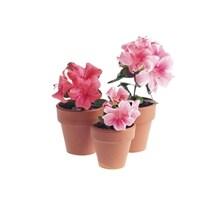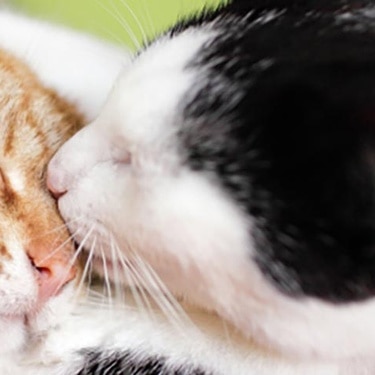
-
Find the right food for your petTake this quiz to see which food may be the best for your furry friend.Find the right food for your petTake this quiz to see which food may be the best for your furry friend.Health CategoryFeatured products
 Adult Healthy Mobility Chicken Meal, Barley & Brown Rice Recipe Dog Food
Adult Healthy Mobility Chicken Meal, Barley & Brown Rice Recipe Dog FoodAdvanced nutrition shown to support joint health and improve mobility
Shop Now Adult Salmon & Brown Rice Recipe Dog Food
Adult Salmon & Brown Rice Recipe Dog FoodSupports lean muscle and beautiful coat for adult dogs
Shop Now Adult Sensitive Stomach & Skin Chicken Recipe Dog Food
Adult Sensitive Stomach & Skin Chicken Recipe Dog FoodHill's Science Diet Sensitive Stomach & Skin dry dog food is gentle on stomachs while nourishing skin & promoting a lustrous coat.
Shop NowFeatured products Adult Salmon & Brown Rice Recipe Cat Food
Adult Salmon & Brown Rice Recipe Cat FoodSupports lean muscle and beautiful fur for adult cats
Shop Now Adult Perfect Weight with Chicken Cat Food
Adult Perfect Weight with Chicken Cat FoodBreakthrough nutrition for your cat’s healthy weight maintenance and long-lasting weight support
Shop Now Adult Urinary Hairball Control Tender Chicken Dinner Cat Food
Adult Urinary Hairball Control Tender Chicken Dinner Cat FoodPrecisely balanced nutrition to support urinary health from kidney to bladder. With natural fibre technology to help reduce hairballs.
Shop Now -
DogCat
- Cat Tips & Articles
-
Health Category
- Weight
- Skin & Food Sensitivities
- Urinary
- Digestive
- Kidney
- Dental
- Serious Illness
-
Life Stage
- Kitten Nutrition
- Adult Nutrition
Featured articles Water
WaterWater is the most important nutrient of all and essential for life. Animals can lose almost all their fat and half their protein and still survive, but if they lose 15% of their water, it will mean death.
Read More Pet Food Storage Tips
Pet Food Storage TipsWhere you store your cat and dog food can make a big difference in the quality and freshness once it is opened. Here are some common questions and recommendations for optimal storage for all of Hill’s dry and canned cat and dog food.
Read More The Right Diet For Your Pet
The Right Diet For Your PetLearn what to look for in healthy pet food & nutrition, including ingredients, quality of the manufacturer, your pet's age, and any special needs they have.
Read More -


 Many cat owners have opted in recent years to keep their cats indoors. This is understandable as the dangers of road traffic accidents are all too real in both rural and urban locations. But indoor living can be hazardous too. Weight gain due to inactivity or behavioral problems due to lack of stimulation are easily solved through feeding the right foods and providing toys and games that keep cats active and interested. But how else can you ensure that your indoor cat is kept safe and sound?
Many cat owners have opted in recent years to keep their cats indoors. This is understandable as the dangers of road traffic accidents are all too real in both rural and urban locations. But indoor living can be hazardous too. Weight gain due to inactivity or behavioral problems due to lack of stimulation are easily solved through feeding the right foods and providing toys and games that keep cats active and interested. But how else can you ensure that your indoor cat is kept safe and sound?
Safe Surroundings
Houseplants can present significant dangers to cats who are tempted to chew on leaves or flowers particularly. The part of the plant that is actually eaten can make a big difference to how a cat will be affected: daffodil bulbs for example are a common cause of poisoning in dogs but the leaves and flowers (which a cat is more likely to chew) are a much less common cause of poisoning. To be safe, daffodils and lilies are probably best avoided as they are one of the most common causes of plant poisonings in pets. It is also important to remember that fresh flower bouquets can also be eaten - Lily of the Valley for instance is toxic to cats.


Tasty Tips
The root of the problem
Your cat does not need to swallow a plant to be harmed, as some plants such as Joseph's Coat (Croton), have toxic sap that is released when the plant is chewed, causing blistering of the mouth. However, the risks do have to be kept in proportion. In some cases the toxic reaction to plants can be very mild and in others it is 'self limiting' meaning that the cat will recover on its own. It is also not uncommon to see huge lists of houseplants that can cause poisoning in cats. In reality, the majority of cats will find most of these plants unattractive or uninteresting. Cyclamen for instance is often included in these lists but it is only the root that is poisonous and few cats are likely to find them so attractive that they will dig down and eat sufficient quantities to trigger a reaction.
Hot Tips
Avoid buying houseplants that are known to cause toxic reactions in either children or pets - if they present a danger to children, they probably present a danger to cats
If your cat eats a significant quantity of any houseplant or a little of a known toxic plant, or shows salivating or distress after chewing a plant, contact your vet straight away
Consider placing silver foil or cling film around the base of your houseplants - this makes digging around the roots of the plant unattractive.
Ensure your cat always has plenty of fresh water available (to avoid the temptation to chew leaves for moisture)
Offer toys, timed meals from automatic dishes, or a wind chime outside the window, to keep your cat amused when you are out, because boredom can lead to plant chewing.
The Most Common House Plant Poisons
Azalea
Lilies including Easter Lily, Day Lily (Hemerocallis), Tiger lily
Croton (Joseph's Coat)
Daffodils (Narcissus species)
Caladium (Elephant Ear)
Dieffenbachia (Dumb Cane)
Ficus (rubber plants, weeping and variegated fig plants)
Philodendron
Monstera (Swiss Cheese Plant)
Oleander
Poinsettia
Christmas Cherry
Holly berries
For more information visit the Royal Horticultural Society
Related products

Supports lean muscle and beautiful fur for adult cats

Precisely balanced nutrition to support urinary health from kidney to bladder. With natural fibre technology to help reduce hairballs.

Delicious turkey chunks in gravy with omega-3 fatty acids for eye health and brain development in kittens, and high-quality protein to support muscle growth. Balanced levels of minerals for strong bones and teeth.

Breakthrough nutrition for your cat’s healthy weight maintenance and long-lasting weight support
Related articles

As a responsible pet owner you owe it to yourself and your cat to understand problems associated with overweight cats.

HillsPet Nutrition provides information on proper nutrition, fitness and special needs in keeping your cat healthy and happy.

Get helpful information on proper feline oral healthcare and why it's so vital to take care of your cat's teeth.

Being overweight puts a cat at risk for developing many serious health issues. Weight gain indicates an increase in body fat and usually results when your cat eats too much and exercises too little.

Put your cat on a diet without them knowing
Our low calorie formula helps you control your cat's weight. It's packed with high-quality protein for building lean muscles, and made with purposeful ingredients for a flavorful, nutritious meal. Clinically proven antioxidants, Vitamin C+E, help promote a healthy immune system.
Put your cat on a diet without them knowing
Our low calorie formula helps you control your cat's weight. It's packed with high-quality protein for building lean muscles, and made with purposeful ingredients for a flavorful, nutritious meal. Clinically proven antioxidants, Vitamin C+E, help promote a healthy immune system.


